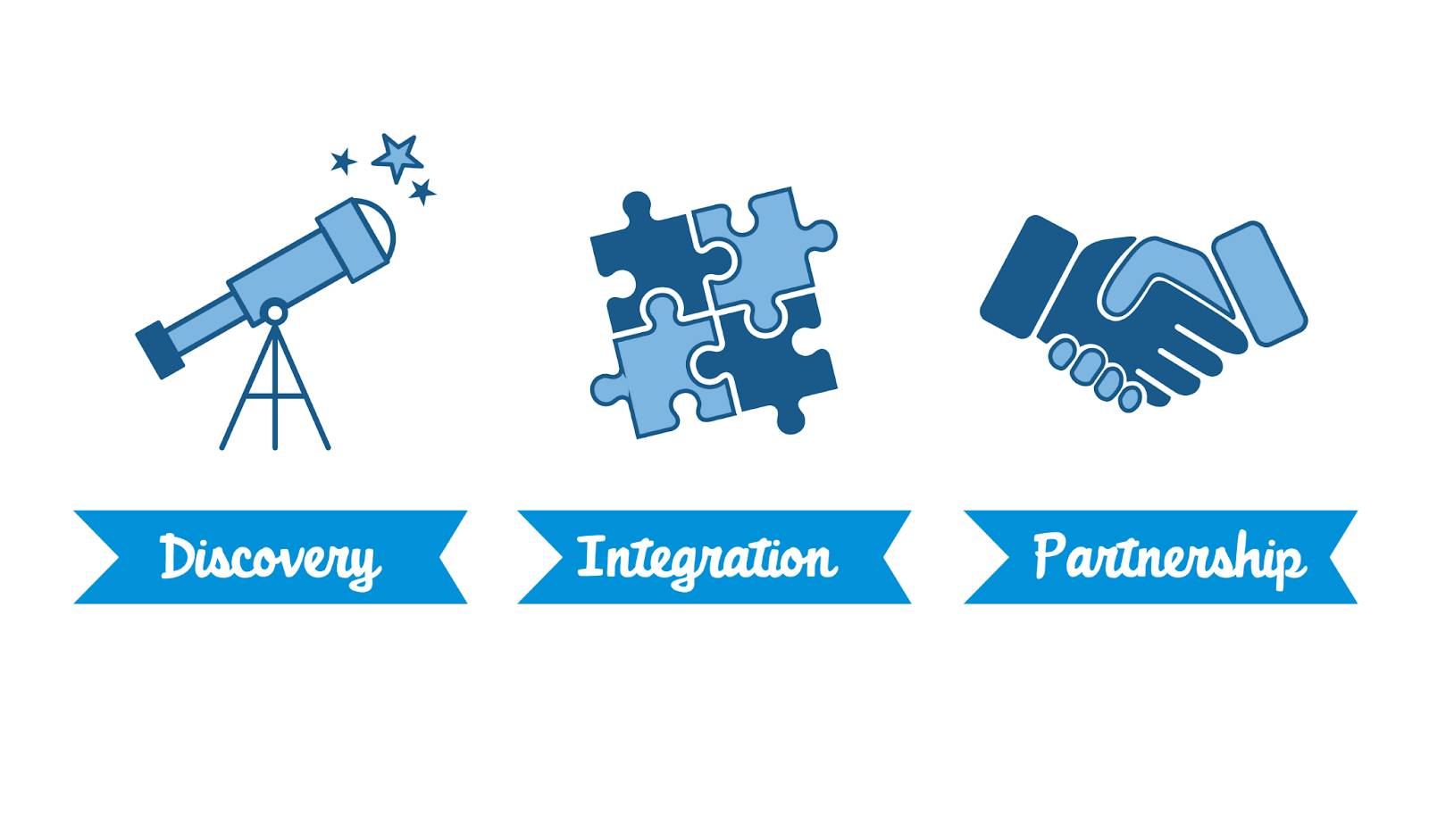Build a Coalition of the Willing
Learning Objectives
After completing this unit, you’ll be able to:
- Define coalition of the willing.
- Explain how to build a coalition of the willing.
Rally the Willing
Ecosystem mapping is used to understand the internal audiences needed to support an idea and bring it to market. But how can you rally teams and individuals at your organization around a project or initiative to get an idea off the ground? Build a coalition of the willing.
In the business world, a coalition of the willing is a mission-driven group of advocates, including project sponsors and cross-functional team members. These advocates use their skills, experiences, and networks to develop a new idea into a product or service and help bring it to market.
Through a coalition of the willing, you can create excitement, inspire collaboration, and achieve alignment among leadership to formalize a new project or initiative. For example, if you see an opportunity for your company to solve a new problem for its customers by adding a new feature to an existing app, you suggest this. But leadership shares that they’ve already established a roadmap, or perhaps there’s an innovation team tasked with coming up with these types of ideas. If you believe this idea will add long-term value for customers and the company and you don’t want to drop it, you can build a coalition of the willing.
Discover, Integrate, Partner
First, let’s learn about some of the phases you should understand if you want to create a coalition of the willing: discovery, integration, and partnership.

Discovery
In the discovery phase, you find out who else is interested in your idea. To do this, talk to people from different parts of your organization, such as individuals and groups from business development, design, information technology, and more. Are there other people working on solving the problem? Are there people with skills you would need to evaluate, bolster, or even prototype your idea? Find the people who align with your goals. If you can't find anyone excited enough about it to get on board, it might not be the right idea or the right time.
During discovery, you also find out what other information and research you need to gather and share to help more people join your effort. This means thinking about things like:
-
What is the best way to explain your vision? This method, such as an interactive presentation or a brief pitch, depends on your audience—expect to make tweaks as you share your vision with different teams and individuals.
-
How can you help teams and individuals overcome doubts about the business viability of the idea? You learn more about coworkers’ apprehensions as you share your vision. Think about what you need to share with them to mitigate their concerns.
-
Will your company be able to make it with the resources you already have? You may realize you need to add capabilities to deliver on an innovative idea or modify the idea to deliver it without significant new investment.
Integration
In the integration phase, you begin the planning and collaboration process by working with collaborators to bring your vision to life and share it with others. To start this work, set up one-on-one and team meetings to document, share, and begin working with the resources and people, including key research and subject-matter expertise, you need to bring others on board with your vision.
Partnership
In the partnership phase, you show executive leadership how your vision and proposed project align with top organizational goals and priorities. Gaining leadership buy-in is key to developing your idea. Your proposal should be clear and compelling. This means including key points like why this project is a good use of your organization’s time and resources and how leadership can articulate the project value to others, such as external stakeholders. If leadership is not supportive of your idea, this might mean you need to refine it or hold on to it until the timing is right, such as in a future quarter or fiscal year.
Best Practices
When building a coalition of the willing, follow these best practices.
-
Internal alignment brings better external outcomes. When you align internally around an idea and efforts for a new project, you create more effective and intentional customer experiences. For example, you can work internally to align teams to make sure they create a more unified experience for customers across email, social, and web channels during a product launch.
-
External research and collaboration are key. When you don’t include end-user needs and their respective social contexts and dynamics in the design process, it’s a missed opportunity to create a more intentional and effective product or service. This also includes using customer and behavioral data, such as looking at data to understand how a work-from-anywhere work culture has changed consumers’ buying cycles to ensure we aren’t working within an internal silo.
-
Different perspectives and skill sets complement each other. When you understand your team members’ professional and lived experiences and related skill sets, you can find others who complement them. For example, a team of developers with in-depth technical expertise might collaborate with a business and content strategist. This way, they can tap into their skill sets to build a business model and related communications to bring a product to market and promote it.
Next, you explore how the jobs-to-be-done (JTBD) framework helps organizations align their design and build process goals with the specific job customers want to accomplish through a product or service.